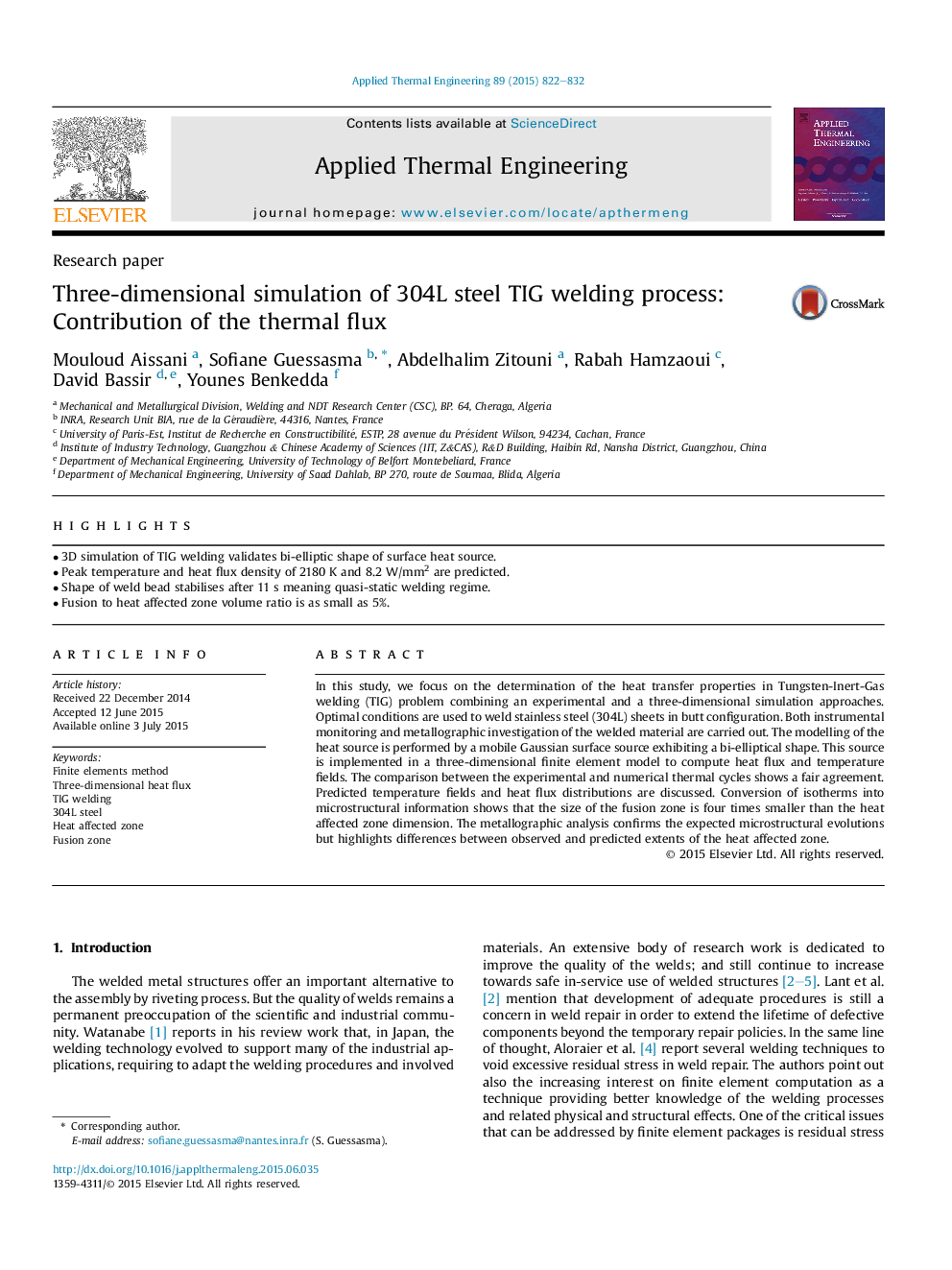| Article ID | Journal | Published Year | Pages | File Type |
|---|---|---|---|---|
| 645417 | Applied Thermal Engineering | 2015 | 11 Pages |
•3D simulation of TIG welding validates bi-elliptic shape of surface heat source.•Peak temperature and heat flux density of 2180 K and 8.2 W/mm2 are predicted.•Shape of weld bead stabilises after 11 s meaning quasi-static welding regime.•Fusion to heat affected zone volume ratio is as small as 5%.
In this study, we focus on the determination of the heat transfer properties in Tungsten-Inert-Gas welding (TIG) problem combining an experimental and a three-dimensional simulation approaches. Optimal conditions are used to weld stainless steel (304L) sheets in butt configuration. Both instrumental monitoring and metallographic investigation of the welded material are carried out. The modelling of the heat source is performed by a mobile Gaussian surface source exhibiting a bi-elliptical shape. This source is implemented in a three-dimensional finite element model to compute heat flux and temperature fields. The comparison between the experimental and numerical thermal cycles shows a fair agreement. Predicted temperature fields and heat flux distributions are discussed. Conversion of isotherms into microstructural information shows that the size of the fusion zone is four times smaller than the heat affected zone dimension. The metallographic analysis confirms the expected microstructural evolutions but highlights differences between observed and predicted extents of the heat affected zone.
